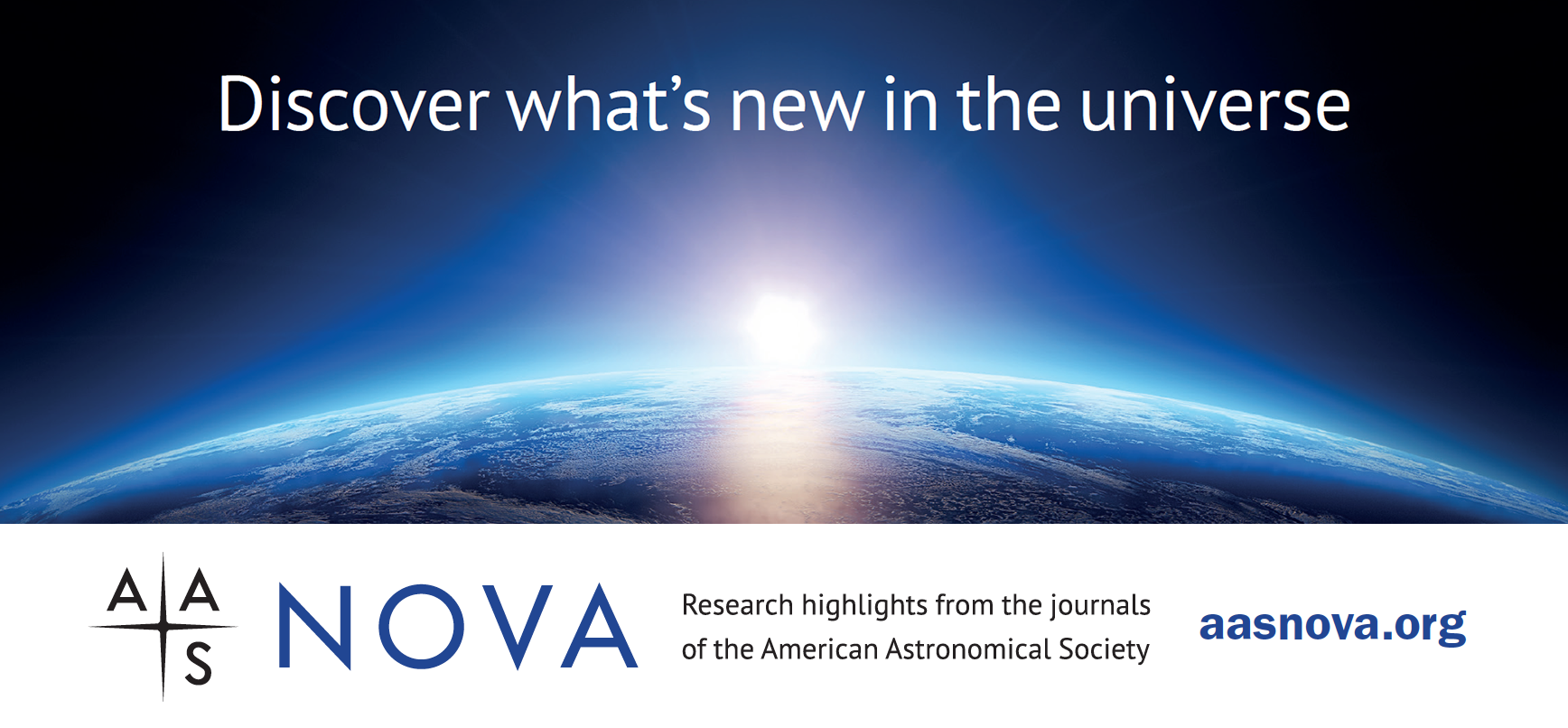Highlights from AAS Nova: 28 January – 10 February 2024

Kerry Hensley American Astronomical Society (AAS)
AAS Nova provides brief highlights of recently published articles from the AAS journals, i.e., The Astronomical Journal (AJ), The Astrophysical Journal (ApJ), ApJ Letters, ApJ Supplements, The Planetary Science Journal, and Research Notes of the AAS. The website's intent is to gain broader exposure for AAS authors and to provide astronomy researchers and enthusiasts with summaries of recent, interesting research across a wide range of astronomical fields.

The following are the AAS Nova highlights from the past two weeks; follow the links to read more, or visit AAS Nova for more posts.
9 February 2024
How Important Are Initial Conditions in Models of the Solar Corona?
Researchers explore whether the choice of initial magnetic field impacts the outcome for models of the solar corona.
7 February 2024
Even Dark Sky Sites Aren’t Immune to Light Pollution
Researchers quantified the impact of artificial lighting on sites across Chile for the first time, showing that we must actively preserve dark skies in remote areas and urban corridors alike.
6 February 2024
Sloshing in the Universe’s Biggest Bathtub
Astrobites reports on the exciting goings-on around the sloshing center of the galaxy cluster Abell 2495.
5 February 2024
Featured Image: How Close Is Too Close to a Kilonova?
How far do we need to be from a kilonova to be safe from the explosion’s X-rays, gamma rays, and cosmic rays?
2 February 2024
What Kind of World is LHS 1140 b?
One of the most popular planets is also maddeningly ambiguous: is LHS 1140 b rocky, watery, or gaseous?
31 January 2024
How to Peel a Star Apart with a Black Hole
You can take a star apart layer by layer — all you’ll need is a black hole and a set of precisely tuned orbital parameters.
30 January 2024
Two Small Magellanic Clouds Are Better than One
Astrobites reports on the recent exciting discovery that the Small Magellanic Cloud is actually composed of two distinct star-forming systems.
29 January 2024
Monthly Roundup: Supernovae in the Spotlight
Four research articles examine various aspects of supernova science, from attempts to determine how lightweight a supernova progenitor star can be to exploring why some massive stars don’t produce supernovae at all.


